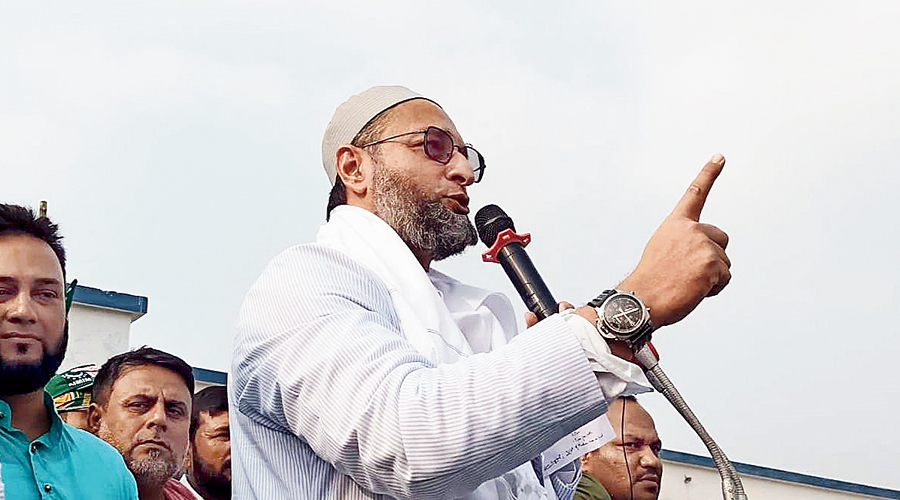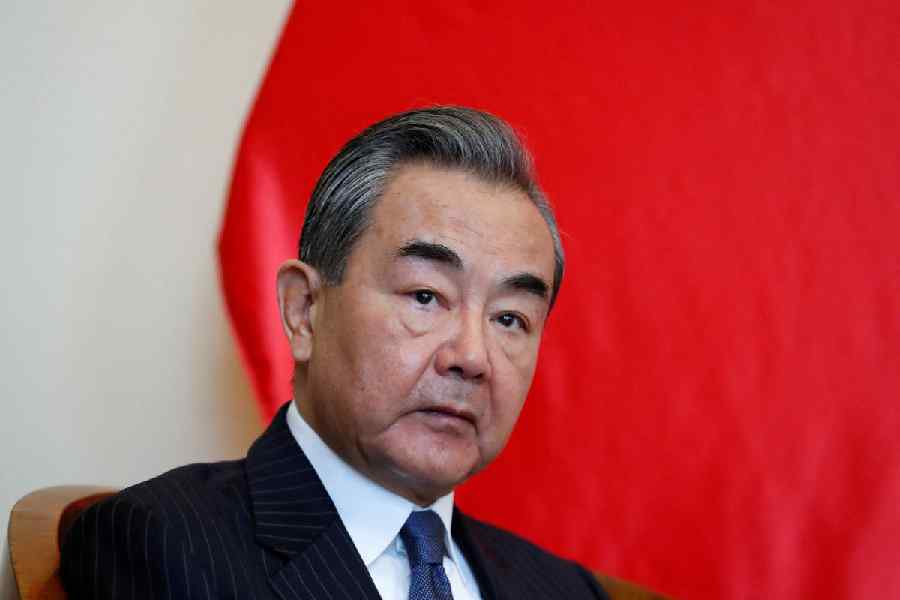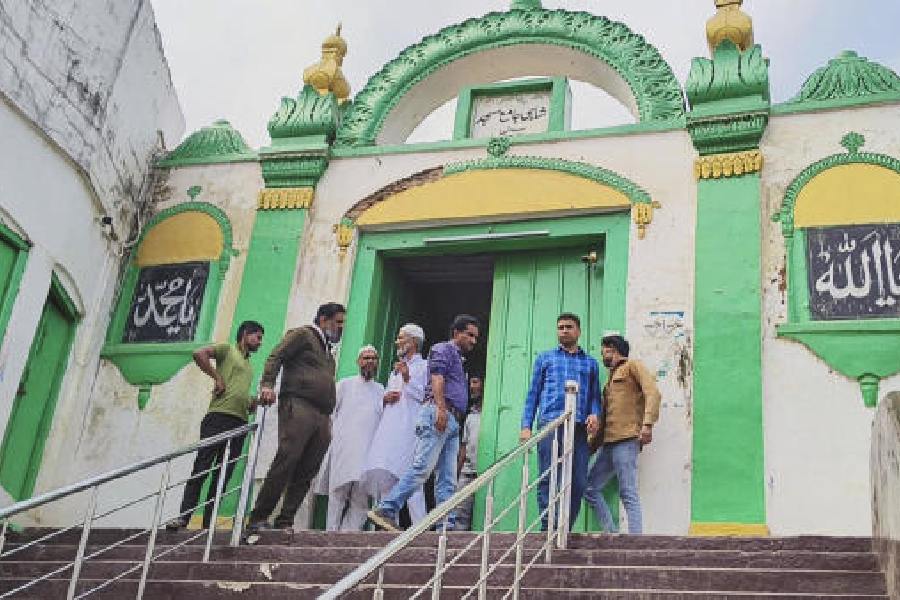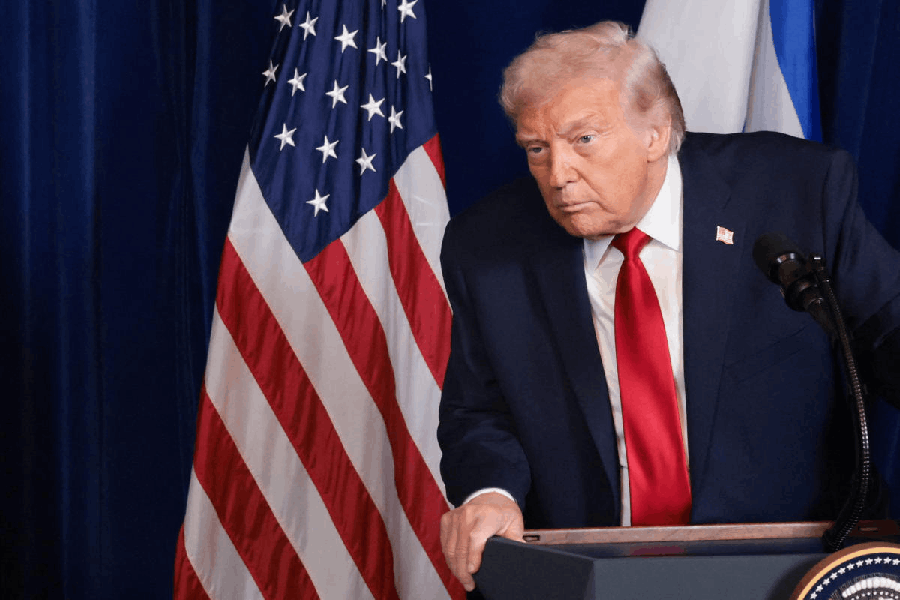Asaduddin Owaisi is often called the B-team of the Bharatiya Janata Party by his political opponents. The implication is that the Hindutva politics of the BJP and the Muslim-centric politics of Owaisi reinforce each other by splitting voters along communal lines. It is true that the rise of Hindutva has enabled Owaisi to expand his party beyond its base of Hyderabad. The All India Majlis-e-Ittehadul Muslimeen’s nascent political footprint has spread in an era dominated by Hindutva, presently spanning from Bihar in the east to Karnataka in the south and Maharashtra and Gujarat in the west. The party is now gearing up to establish a foothold in Uttar Pradesh, using a similar campaign strategy that had worked for it in Bihar.
However, the relationship between the dominance of Hindutva and the scope of Owaisi’s politics is much more complex, even paradoxical, than a straightforward equation of mutual benefit. Hindutva politics has certainly facilitated the growth of Owaisi’s politics but it also tethers it in. To understand why, one must carefully understand the essential nature of the political pitch made by the AIMIM to Muslim voters.
The facilitative role played by Hindutva is easier to grasp. Owaisi’s opening lies in Hindutva politics pushing secular parties towards a dilution of their secular commitment. As Hindutva becomes more mainstream, secular parties have started to become more pussyfooted in their outreach to Muslims. In a manner, whereas the courting of different caste groups is overt and high-pitched, the appeal to the Muslim vote is made in a more covert and sheepish way, as if they have internalized the charge of ‘Muslim appeasement’.
In this gap, Owaisi comes with the unabashed rhetoric of furthering the interests of Muslims and giving rousing expression to their deeply felt grievances against Hindutva politics. This is why many thousands of people, especially young Muslims, turn up at his rallies in small towns of Uttar Pradesh and Bihar.
However, Hindutva also simultaneously places hard limits on the growth of Owaisi’s politics. This side of the equation is more complicated and, hence, easily overlooked. In a state such as Uttar Pradesh, the Muslim vote has historically been dispersed among different secular parties. Unlike the imagination of a unified Muslim ‘vote bank’, the Muslim vote is actually a diverse patchwork of transactional relationships mediated by caste, class and region. In a 2015 study of Muslim voting patterns in Uttar Pradesh, the political scientists, Oliver Heath, Gilles Verniers and Sanjay Kumar, observed that “Muslims are the only major ethnic group in the state who do not have a distinct political party to represent their interests — and partly for this reason they may be inclined to switch their support between the three secular parties (SP, BSP, Congress)...”
What makes Owaisi’s electoral pitch to Muslims distinct from that of other secular political parties is that the AIMIM is not simply offering them a political bargain based on patronage or security. He is essentially offering them a political vision. The formative elements of this political vision are similar to the ones earlier espoused by Ram Manohar Lohia to other backward classes and Kanshi Ram to Dalits: the cause of the socio-economic backwardness of the given community is representational blockage in existing parties and, thus, the solution is to build up independent political power. If 11 per cent of Yadavs can elect a chief minister, then why can’t 19 per cent of Muslims elect 19 MLAs of their own, Owaisi asked in a recent electoral rally, imploring the community to unite behind the AIMIM. In other words, Muslims must forge a common political consciousness, leverage their numerical strength, build their own political leadership, and raise their ambitions beyond short-term concerns of patronage and security to the long-term goal of socio-economic equity.
In contrast, the electoral pitch of the secular parties towards Muslims is oriented more towards the immediate political context. To the extent that intensification of Hindutva raises the stakes of the immediate political context, Muslims would be goaded towards the safer option of regional parties rather than the gamble of the AIMIM. Furthermore, as Hindutva has made Muslims the single-most politically radioactive community, the dream of a Muslim-led, cross-ethnic coalition (like the ones constructed by the Samajwadi Party and the Bahujan Samaj Party) seems more fantastical than it ever did.
A political vision aimed at a constituency succeeds when it manages to elicit a broad buy-in within that constituency, which, in turn, depends on the credibility of the vision. The intensification of Hindutva circumscribes Owaisi’s politics to the extent that it makes his vision less credible. Political visions succeed in a context of rising expectations, which raise the horizons of future possibilities. The success of Mandal politics was preceded by an unprecedented socio-economic advance of large OBC groups after the Green Revolution. The BSP was buoyed by a new class of upwardly mobile Dalits, nurtured by reservation in jobs and education, who had the confidence to dream of capturing political power for themselves. A loosening of the hierarchical grip of the caste system in the wider society also meant that the backward castes could make effective coalitions with each other without needing the leadership of Brahmins or other upper castes. In other words, the success of these political visions was based on burgeoning aspirations whetted by a favourable socio-political environment.
In contrast, even as Owaisi’s exhilarating vision generates enthusiasm among a section of Muslims, it is immediately tempered by a gnawing reality of rising insecurity. The intensification of campaigns of communal prejudice and the normalization of hate crimes against Muslims in a state such as Uttar Pradesh can lend an existential urgency to the votes of many Muslims. Voters tend to have a sharp sense of risks and rewards. Since secular parties, and not Owaisi, remain by far the more potent force to defeat the BJP, they are better placed to corner the anti-BJP vote.
How, then, was Owaisi able to make inroads into Bihar? For starters, four out of five seats won by the AIMIM in Bihar were won from the parliamentary constituency of Kishanganj where Muslims make up around 70 per cent of the population. Thus, Muslims voted for the AIMIM only in constituencies where the BJP had little chances of winning and the principal competitors were other secular parties. In these constituencies, the issue of safety was not a priority and, thus, Owaisi’s vision had a stronger purchase. Overall, 76 per cent of Muslims voted for the Rashtriya Janata Dal, decisively choosing the RJD over the AIMIM in seats where the BJP was a principal competitor.
In contrast, there are hardly any safe Muslim constituencies in Uttar Pradesh — there is no outright Muslim-majority parliamentary constituency in the state. And as the BJP has shown in the last three elections, it can win through communal polarization in minority-concentrated districts such as Saharanpur, Bijnor, Muzaffarnagar, Azamgarh and Bareilly. Secondly, as Aditya Menon has pointed out in The Quint, the Muslims of Bihar, under the more moderate rule of Nitish Kumar, could also have been less influenced with security-driven anxieties than might be the case with Muslims under the harsher rule of Yogi Adityanath.
This is the central paradox of Owaisi’s politics in the era of Hindutva: the political oxygen provided to the AIMIM is just enough to allow the germination of its politics but not enough to allow it to be firmly planted on the political landscape.
This paradox extends to Owaisi’s relationship with the Opposition secular parties. Since the politics of the AIMIM is designed to poach the voters of secular parties, they then become the central target of its political attacks. However, this also shrivels the bargaining power of AIMIM MLAs post election. Had the strategy of Owaisi’s party been to contest in either a partnership or a covert understanding with secular parties, it could have credibly claimed to have a strong negotiating hand in any future secular government.
Thus, whereas Owaisi’s promises are grander and embedded in a clear vision for the future of Muslims, his party’s credibility to deliver on those promises is very limited. On the other hand, the material benefits promised by the regional parties, although more incremental and transactional than the transformative promises of Owaisi, are much more realistic.
Hence, both in terms of security and material benefits, secular parties are the safer, and more conservative, option as opposed to the bullish, but riskier, option of Owaisi. And in a more communally charged and turbulent electoral environment fomented by the BJP, one would expect Muslim voters to lean towards realism and conservatism than risk a leap into the unknown.
Asim Ali is a political columnist and research associate with the Centre for Policy Research, Delhi










